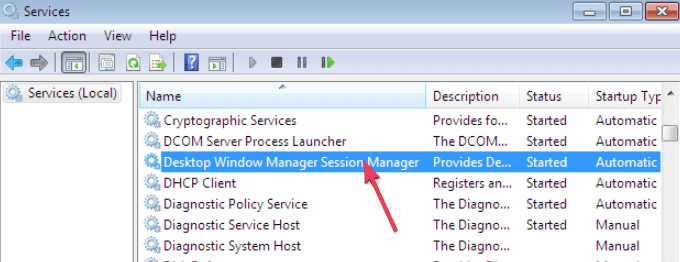

- Windows desktop manager how to#
- Windows desktop manager Patch#
- Windows desktop manager windows 10#
- Windows desktop manager code#
- Windows desktop manager windows#
Double click on DisableHWAcceleration and change the Value data to 1.Name the new value as DisableHWAcceleration.Right click on the blank space in the right pane and choose New -> DWORD (64-bit) Value/ DWORD (32-bit) Value (depending on your system).Then, press OK button to select the Avalon.Graphics key. I use Wallpaper Engine and tried to disable it, but got no result. If I kill this process it starts to use about 300Mb and then slowly rises to previous values. Copy Computer\HKEY_CURRENT_USER\Software\Microsoft\Avalon.Graphics and paste it into the Registry Editor address bar. 8Gb RAM I have 2 screens: 1) 1680x1050 2) 1920x1080 When I start Task Manager I often see 94 RAM usage and the first reason is Desktop Window Manager.Disable Hardware Acceleration for Microsoft Office Products Wait for the troubleshooting process to finish.

Windows desktop manager windows#
Windows desktop manager how to#
How to fix Desktop Window Manager high CPU or high memory on Windows 10?

However, there are many reasons that will lead to high CPU usage for instance, too many processes are opened.įix Desktop Window Manager High CPU (DWM.exe)

Certainly, some resources are required to run dwm.exe in the background (about 2% to 3% of CPU and 50MB to 100 MB of memory it varies from system to system). Thus, a certain amount of processor will be consumed.īut you may not notice the running of Desktop Window Manager, let alone its high CPU usage, right? According to users’ feedback, there’s an annoying experience: Desktop Window Manager high CPU (or memory). It works by enabling the use of hardware acceleration and runs in the background as dwm.exe. The Desktop Window Manager is a practical utility for rendering the visual effects on user interface like transparency and high resolution monitor support in Windows operating systems (Windows 10/8/7/Vista).
Windows desktop manager windows 10#
The third vulnerability is an information disclosure vulnerability in Windows Installer while the final flaw is another elevation of privilege vulnerability in the ms-rest-nodeauth component of Azure.Desktop Window Manager is a very useful tool in all common Windows versions, including Windows Vista, Windows 7, Windows 8 and Windows 10 it is very crucial for the graphical user interface. The first of these four is another escalation of privilege vulnerability present in the RPC Endpoint Mapper Service, while the second is a denial of service flaw in Windows NTFS, the primary file service for the Windows operating system. The flaw was patched alongside four other publicly exposed vulnerabilities that haven’t yet been exploited, to the best of Microsoft’s knowledge, including CVE-2021-27091, CVE-2021-28312, CVE-2021-28437 and CVE-2021-28458.
Windows desktop manager code#
To exploit the flaw, hackers will need to have already logged into a system, or trick users into running code on their behalf, further fuelling assertions that it’s being used in chain attacks with other known vulnerabilities.
Windows desktop manager Patch#


 0 kommentar(er)
0 kommentar(er)
